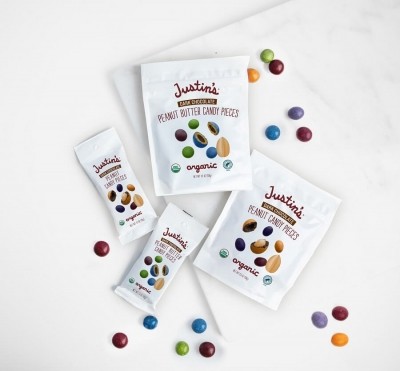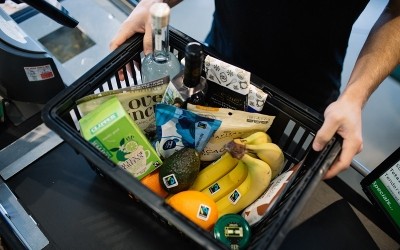Winter Fancy Food Show
Little labels, big impact: How can eco labels drive sales, velocity & consumer loyalty?

And while quality and price “are incredibly important,” consumers – especially younger generations – increasingly want to buy sustainable products, even if that means paying a premium, Kristen Stevens, senior marketing manager for the Marine Stewardship Council, told attendees last week at the Winter Fancy Food Show in Las Vegas.
“Despite everything that is going on in the environment, despite multiple years of a global pandemic, consumers are really optimistic, and they feel like their purchase decisions at the grocery store can actually make a difference to the health of the environment. … They want to support companies that are doing the right think and want to feel good about the food that they are choosing,” she explained.
For support, she noted MSC research that found 48% of seafood consumers (and 68% of the conscious consumer) in the US are prepared to pay more or seafood products from a certified sustainable fishery, based on GlobalScan data in 2023.
Similarly, 56% of all shoppers are willing to pay a premium for product certified by the Non-GMO Project – a figure that goes up to 78% among natural shoppers, added Jade Vantreese, communications manager for Non-GMO Project.
Likewise, US consumers will pay a higher premium for products certified by Fairtrade America, including up to $2.80 more per bag of coffee, $1.10 more per chocolate bar and 60 cents more for a pound of certified bananas, added Kate Stritzinger, director of marketing and impact with Fairtrade America.
While all three women were encouraged by consumers dedication and willingness to pay more for more sustainable products, they acknowledged that there is proliferation of sustainability messages of different veracity levels, which can frustrate and overwhelm consumers.
“Greenwashing is rampant, and consumers want to know they are choosing products that are actually doing good for the environment,” and as such, “they’re increasingly using eco labels as a tool to navigate this really complex landscape and to understand what products actually are making a direct, positive impact on the environment,” Stevens said.
“We’ve also seen in our research that folks are willing to choose brands that they haven’t ordinarily chose before, unfamiliar products, when they see that environmental label. It is just that extra push,” she added.
In some cases, retailers also are pushing brands to certify their sustainability and environmental claims, which can ultimately make a difference on whether a brand secures shelf space and how much, added Stritzinger.
Multiple certifications can offer positive synergistic impact
While the promise of a positive ROI and improved relationship with retailers and consumers may make eco labels more appealing to brands, many companies have limited resources to invest in certifications and limited space on packaging for badges and call-outs.
Acknowledging that there was a backlash a few years ago against products having too many icons or labels on their packaging that caused some brands to reevaluate their certifications and call-outs, Vantreese stressed many eco labels can have a synergistic effect.
For example, she said, data shows that Non-GMO Project verification and USDA Organic certification are “very complementary towards each other. So, if a brand has one or the other, they are seeing a sales lift, but they are seeing the most sales when those labels are pair together.”
When evaluating whether to pursue multiple certifications, Stevens recommended that brands consider the values that are most important to them and their consumers and then evaluate their supply chain to see where there are opportunities and challenges.
“One way that we think about multiple labels and how that might work for brands is to first acknowledge it takes time. You can’t just flip one switch and have four different certifications. It takes effort. It takes more accountability and transparency and that takes time. So, the way I think about where [brands] should start is to look at their supply chain and see what the prevalent issues are, and then take one step at a time [to address those issues],” she said. “It doesn’t have to happen right away, but you are still fighting the food fight and making a difference.”
















